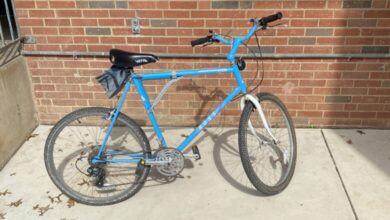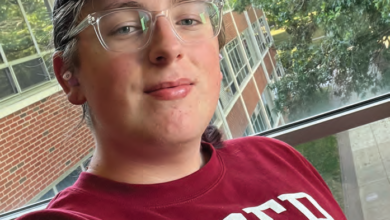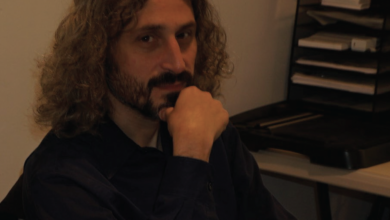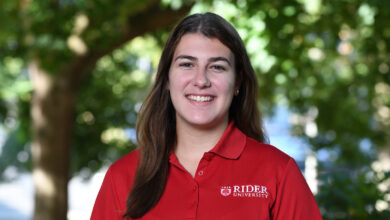Is campus really safe?
By Qur’an Hansford
I would be lying if I said part of the reason for writing this article was because I am slightly envious of those who are currently residing on campus but the main reason for this week’s editorial is to raise the question, is campus really safe?
Regardless of the answer, if I had the ability to live on campus I would, but when I actually took the time to think about it, I might have actually dodged a bullet. As a number of schools and universities across the country reopen for the fall, parents and teachers have become worried about how safe it is for students to return back into the classroom.
To start, there are countless reasons why students do indeed need in-person school as opposed to at-home virtual learning. Students already missed out on a third of their school year due to the stay-at-home order that went into effect in March and the data is beginning to show a shift in learning efficiency.
“U.S. public school students will go into this new school year having learned less than half of the math and just under 70% of the language arts skills they would have acquired had schools remained open last spring,” according to Brown University’s Annenberg Institute for School Reform.
Even college students have expressed their dismay with remote learning, Zoom classes and meticulous assignments. One thing that I can personally relate to is the lack of motivation to successfully finish the year. Going to school all my life, my performance as a student was based heavily on that classroom environment, being able to see and interact with my professors and my peers. I especially miss my alone time in my dorm, the talks with myself and my solo study dates, things that helped me succeed as a student. It is hard trying to keep up this identity when there is nothing left to make it real.
There was always a stigma around school, the long hours, the discipline and the extra work assigned to do at home. Whereas, for some, school also became an escape for students whose home life may be unpleasant, to say the least. Although school gets a bad reputation, it is the one place where kids are kids. This argument holds weight in this discussion because the pandemic condemned a handful of students to the domestic abuse commonly found at the home.
“School is also a refuge for many children, especially for those suffering from abuse, neglect or food insecurity at home. Under the federal Child Abuse Prevention and Treatment Act, school employees are mandatory reporters of child abuse and neglect, and report nearly 20 percent of the child maltreatment cases in this country. That means if schools do not reopen to some in-person education, an estimated 807,700 cases of child abuse and neglect could go unreported this academic year alone,” according to the Washington Post.
Since the virus made its way to the western world and the pandemic altered our social lives, we have seen public health become political. There have been protests on whether masks are effective or about reopening the public during the lockdown, claiming it is an attack on human rights and their First Amendment right to protest the government.
Anthony S. Fauci, director of the National Institute of Allergy and Infectious Diseases, told Congress in June that he feels very strongly we need to do ‘whatever we can to get the children back to school,’ according to the Washington Post. President Trump tweeted in favor of opening schools for in-person learning and threatened to sever funding for districts that do otherwise.
As the virus continued to kill and sicken thousands of Americans with no signs of subsiding, the American Academy of Pediatrics clarified in July that “schools in areas with high levels of COVID-19 community spread should not be compelled to reopen against the judgment of local experts. A one-size-fits-all approach is not appropriate,” according to the Washington Post.
With the competing messages of politicians versus public-health professionals, education administrators are confused with what the “right” decision is to make. Rider has seen their own form of this unfold when the university declared it would be strictly remote for the fall semester until New Jersey Gov. Phil Murphy announced that in-person instruction was going to be permitted. It makes you wonder (especially those who are on campus) if campus is actually safe when administrators are saying one thing but the governor says another hours later.
“As far as the university is concerned, we spend the entire summer planning and preparing to bring students safely back to campus. Every place we’ve developed lands on erring on the side of caution, which is why you see reduced on-campus residency and a great deal of remote instruction. I think the precautions we’ve put in place in the classrooms for in person instruction, as well as in the residence & dining halls, are sound in keeping with best practices espoused by the Centers for Disease Control and scientific guidelines (e.g., mandatory mask wearing, 6 feet of mandatory social distancing), said Biology Professor and Dean of Liberal Arts & Sciences Kelly Bidle.
The scary part about attending school during this time is the unknown about how the virus will react to the fall and winter months. Will the virus mutate? Will there be a vaccine by the time the leaves begin to change and the days get shorter? There is still so much we do not know and as the outdoors begin to open again, we see individuals jump at the opportunity to return back to normalcy. High school seniors entering into their first year of college, no prom, some did not even have graduation, you take all those things away from a teenager getting their first taste of freedom, they’re definitely going to party. The concern that arises is how do you protect thousands of students who crave the traditional college welcome, not one with masks, social distancing and Zoom events? How will professors who might be older or with families of their own to go back to be protected from the spreading of the virus?
“I think the really hard part comes in the spaces that we can’t control (e.g., off campus activities). This is where we are seeing the issues arise at other universities that are seeing outbreaks (parties, lack of wearing masks, etc). It is incumbent upon all of us to abide by the rules to protect ourselves, and each other. I’ve been really pleased to see all of the mask wearing and other good behaviors on campus so far. Time will tell if our entire community respects these critical guidelines on keeping us safe,” said Bidle.
A question I have heard being asked was should schools remain closed until fall 2021? I believe that is a lot of valuable time being taken away from the students but when I think about the overall safety of not only the students but the faculty and those in charge of making sure the environment is safe to study, I am conflicted on which is more important. This is the time for administrators in all sectors of education to be transparent about public health and being candid about whether things will get worse before they get better and how they choose to combat conflict and implement solutions. Students, parents and teachers have put their health on the line in order to educate or be educated and it is everyone’s duty to do their part in ensuring a safe and healthy school year.



